There were two reasons why we went to the city of Recife. The first one was its suburb called Olinda, which was earlier in fact the central part of the settlement, but over time the city expanded southwards and turned into a large modern place with a lot of high-rise buildings. With its suburbs, Recife has around 3.5 million inhabitants which is not little by any stretch of imagination.
The second reason was a visit to the island of Fernando de Noronha, which is in fact the main island of an archipelago, but the archipelago consists of numerous islets and rocks protruding from the ocean, and the only proper and populated island is this main one, so I can talk in the singular of islands.
But, let me first deal with Recife. The 9-hour coach ride, after all like all other inter-city journeys we took during our stay in Brazil, was rather comfortable, since the seats were good and could recline, thus allowing one to take naps. We also made a couple of breaks and during one of the stops we also had the time to eat something. The stop was made by a restaurant with a buffet, a rather simple one, but everything we took was actually very tasty, so we were quite full afterwards, plus this was also the cheapest proper meal that we had in Brazil. What I want to say is that whoever goes to Brazil and uses motorways should not hesitate and should eat well for little money in these rest areas.
Although Sneža and I bought tickets the same day we arrived in Aracaju, i.e., two days before the actual journey, most of the seats had already been taken and the two of us opted for two in the same row, but with a passage in-between. Thus it happened that a young man was sitting next to me and at some point I noticed he had GPS on his mobile and was following the route of the coach. I asked him if we still had a lot to go and he said: “an hour and 40 minutes,” but then he also added that this was only to the airport in Recife (meaning that there was more to the actual coach terminal). Then I got an idea and only confirmed with him that he was talking about the international airport (just to be sure we were thinking of the same place, in case there were more airports in the city). Namely, I knew that our hotel was comparatively quite close to the airport. So, we agreed to get off the coach at that informal stop off the motorway and that was a great idea. In less than 10 minutes we came by taxi to the hotel. After the long coach ride, it felt good to get to a hotel room quickly and take a shower.
The following day, after breakfast, we went to a nearby stop and there we caught a bus that took rather long before we reached Olinda.
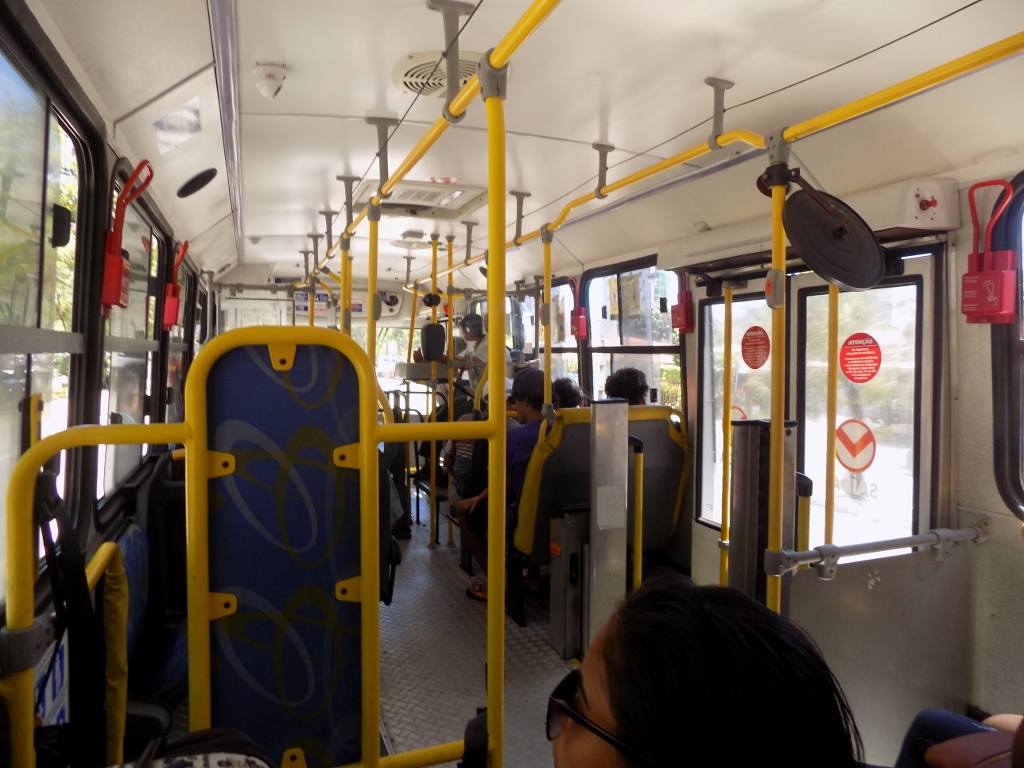 City bus
City bus
When we finally reached the desired destination, first we went to have some juices in a bar next to an alleged beach and we sat there for a while. This sitting in a deep shade felt good, since it was already starting to get hot, which was additionally made worse by the high air humidity. Although we had had such weather all the previous days, we were simply not getting used to it and we certainly did not enjoy it. On the other hand, sitting at that table we could not only watch the local people who were either also sitting at the tables around us or were going about some business of theirs, but we also looked at the beach and the relatively distant high-rise buildings of Recife.
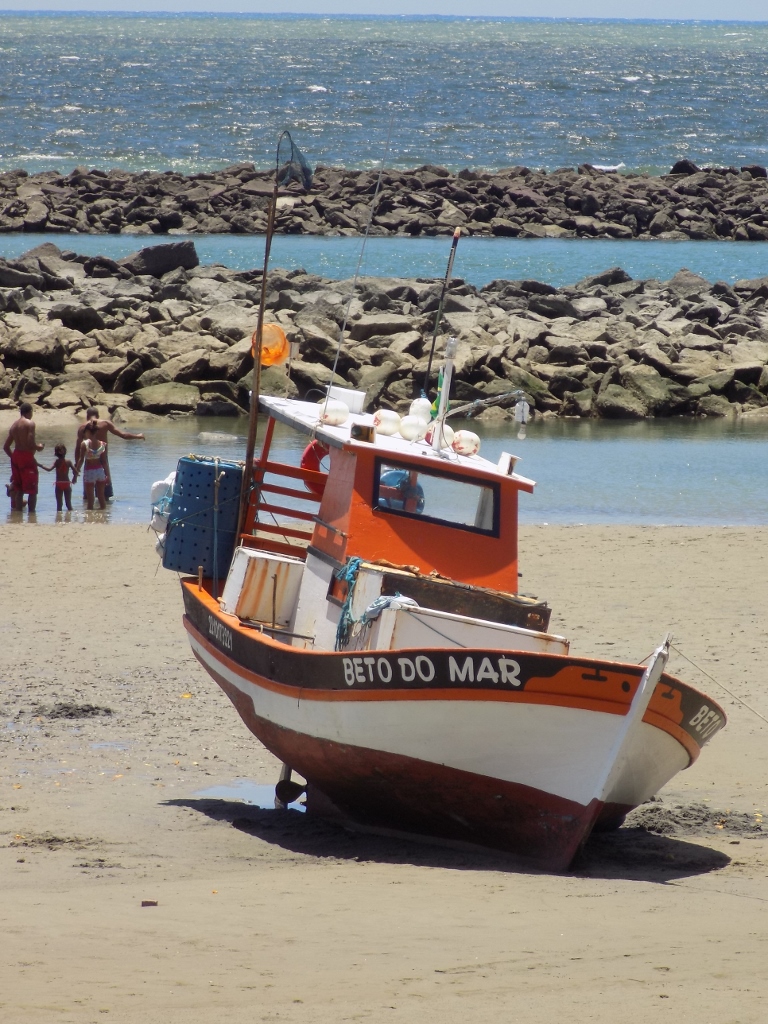 A part of the beach in Olinda
A part of the beach in Olinda
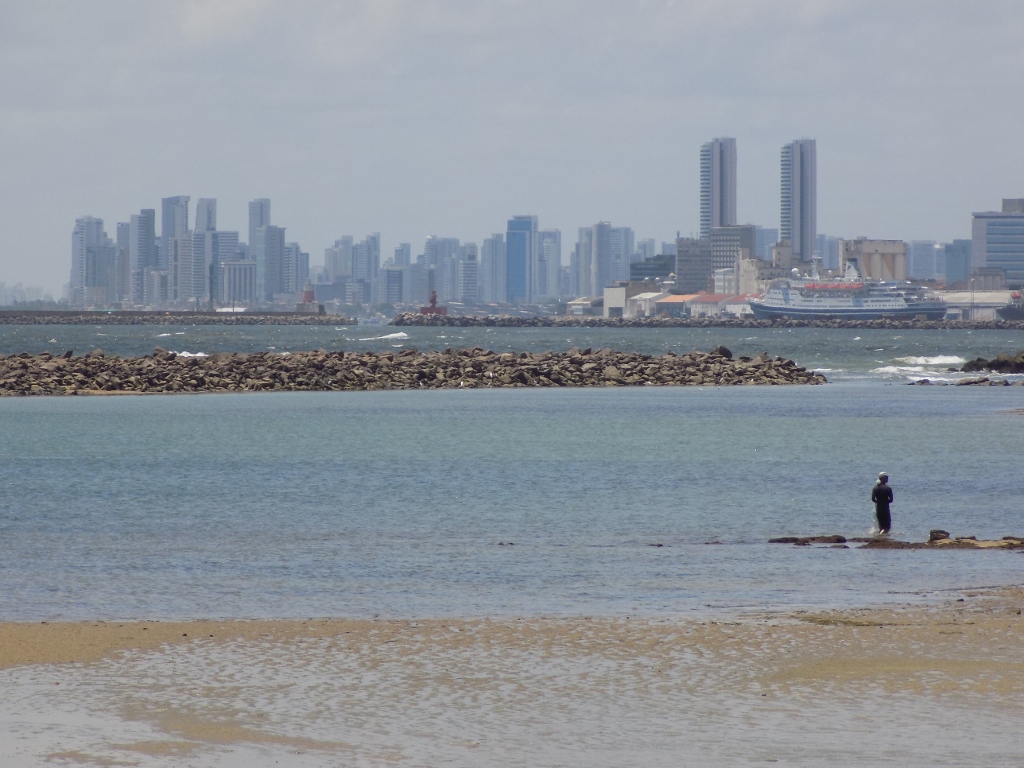 A part of the beach in Olinda and the high-rise buildings of Recife in the distance
A part of the beach in Olinda and the high-rise buildings of Recife in the distance
In the water, except in the shallows that were completely unattractive to our mind, there were no people. It was quite clear why.
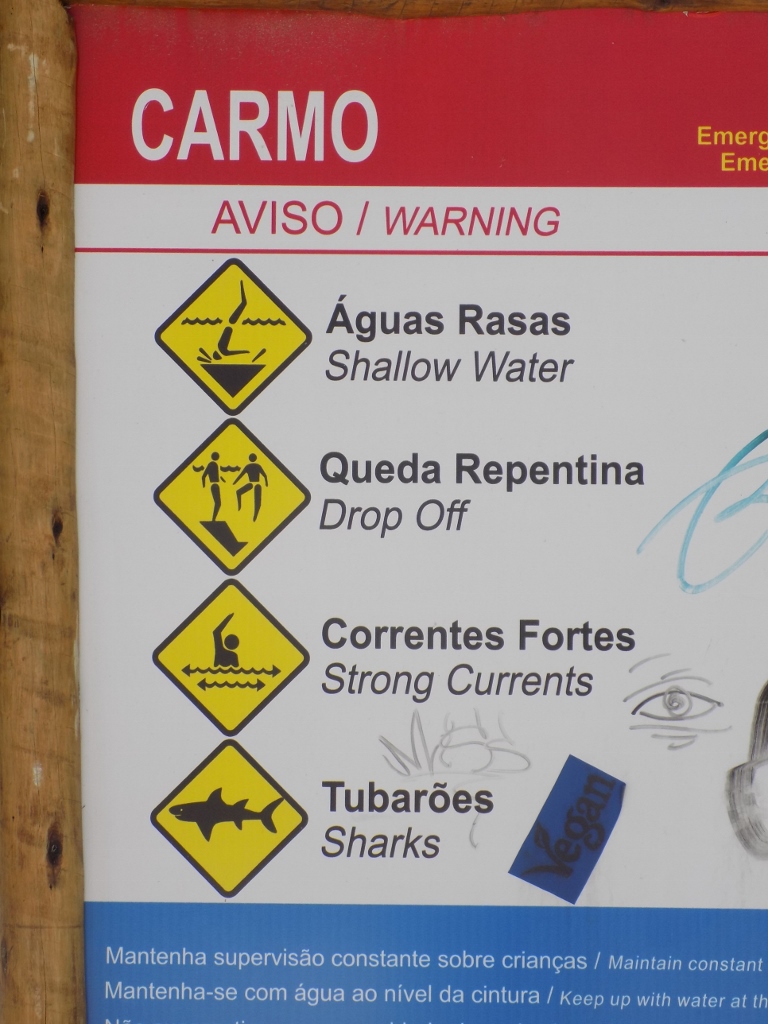 Shallow water, drop off, strong currents and, of course, sharks
Shallow water, drop off, strong currents and, of course, sharks
After this coffee break that was to prepare us for the efforts linked to the sightseeing of the place in very hot weather, we went to a nearby tourist information office where we got a map with a suggested direction for the sightseeing, but we decided to do it in the direction we had already planned anyway. The map was to serve as an indication, plus it was easier to take out of the pocket than the guide book.
Olinda was founded in 1535 by the Portuguese and the history of the town was primarily linked to the production of sugar cane that used to be the main product of Brazil for two centuries. Most of the historic buildings that have survived to date originate from the 18th century. Olinda is particularly important as the place which harmoniously brings together houses, gardens and over 20 Baroque churches, monasteries and chapels, all of that being perched on an elevation above the blue waters of the Atlantic Ocean. Because of this, Olinda or rather its historic centre is in the UNESCO’s World Heritage List. The facades of the religious and administrative buildings have, by the rule, fine, stylish decoration, while the private houses are often painted in vivid colours. We saw something of this kind in the direct proximity of the beach, even before we started with the sightseeing of the town.
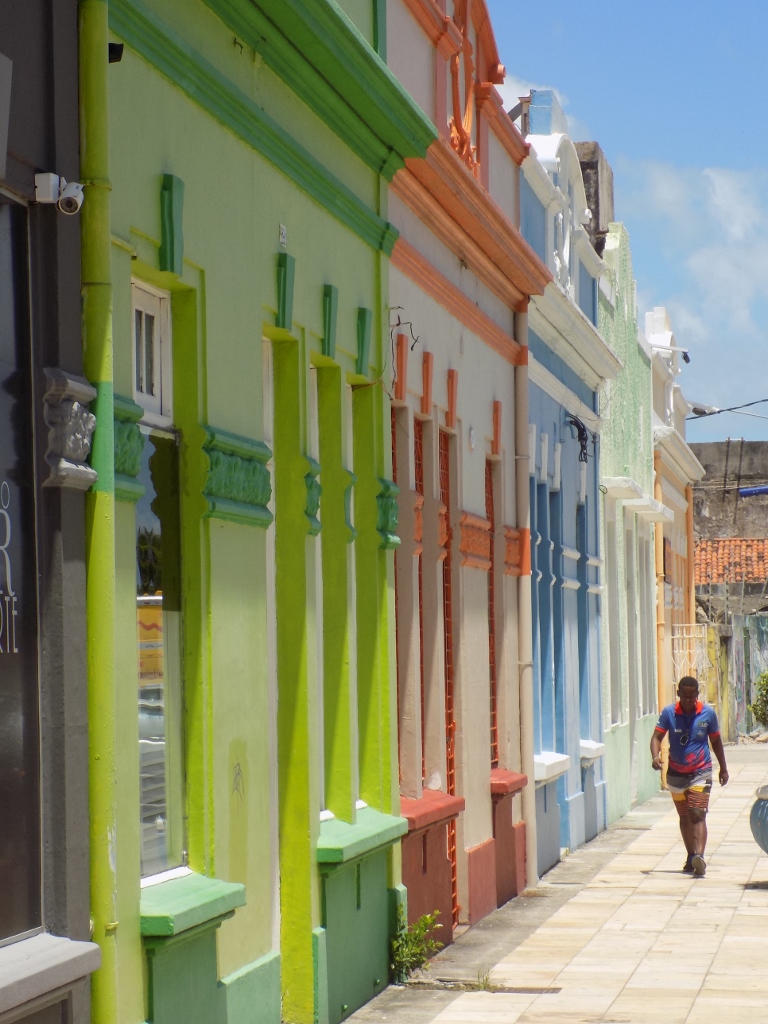 Houses in Olinda
Houses in Olinda
The first in our plan of the visits was the Convent of St Francis (Convento de São Francisco).
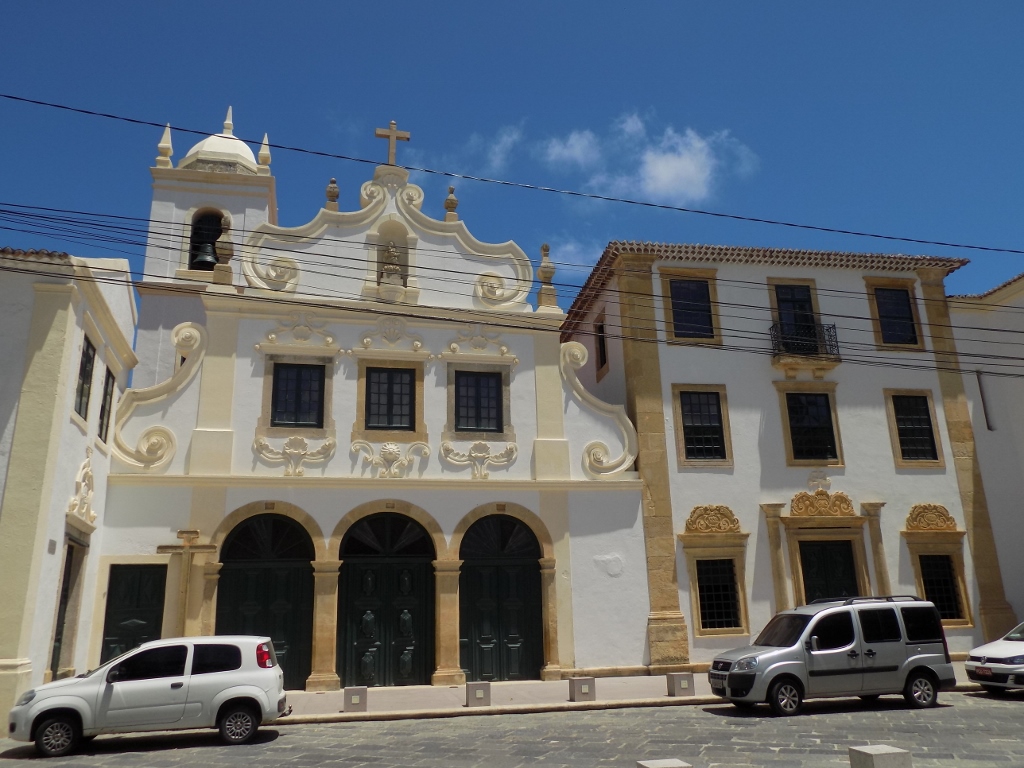 Front facade of the Convent of St Francis
Front facade of the Convent of St Francis
However, when we got there, the convent was closed, but they told us it would be reopened in an hour and a half. We did return later, after two hours, but the convent was still closed. That’s why I was particularly glad that I made at least a couple of photos through the open windows, although it would have been much nicer if we had had a chance to walk around the convent a little, as much as allowed for the visitors.
The convent was built in 1585 and that was the first Franciscan convent founded in Brazil. In 1631, the Dutch invaded the town and blazed a lot of it, including the monastery complex (apart from the chapel). The Franciscans returned later and the monastery was rebuilt. The Convent of St Francis is famous for its azuleijo tiles and it holds the biggest collection of these famous tiles in north-eastern Brazil. Some of them we could see through the open windows.
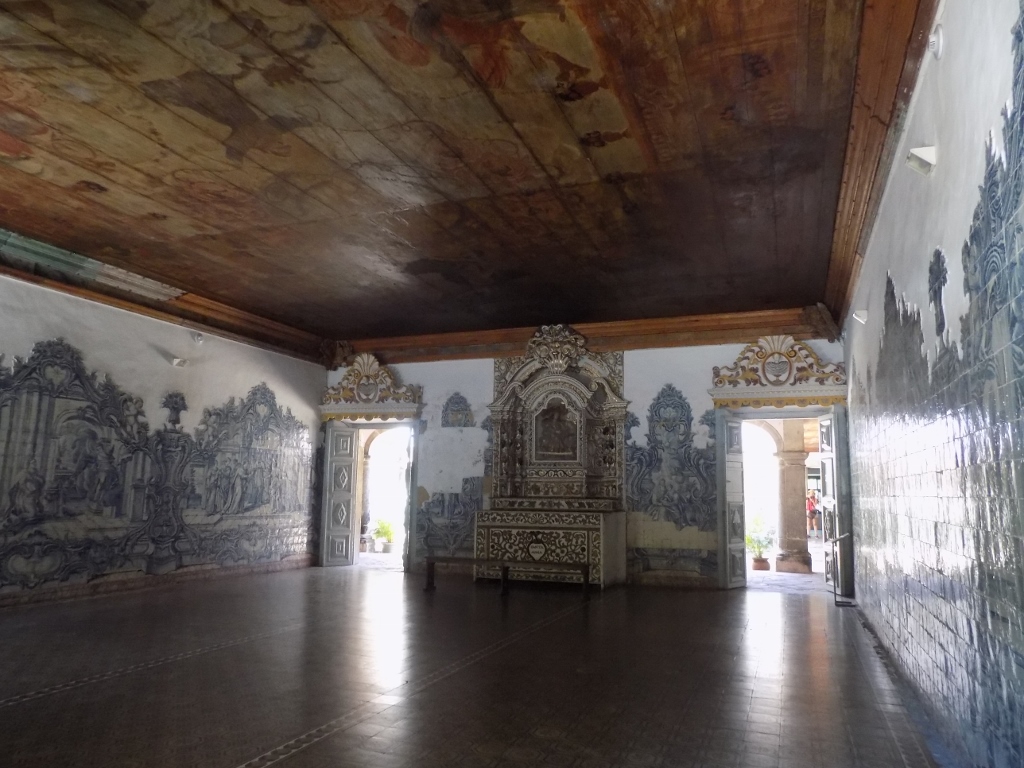 A room at the Convent of St Francis that can be seen through the windows
A room at the Convent of St Francis that can be seen through the windows
While we were standing in front of the monastery, I saw a bird landing onto the cross on the top of the facade of the church. Since I’m keen on birds, I took the opportunity and made a photo of the bird and the cross.
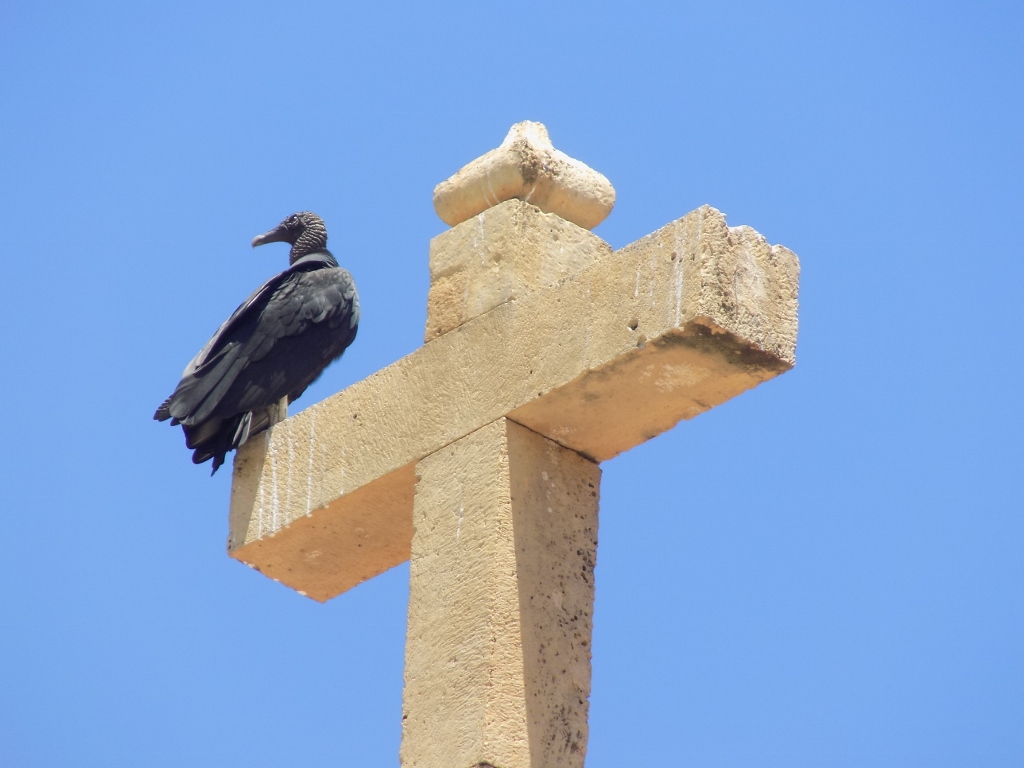 American black vulture on the top of the church
American black vulture on the top of the church
In addition to this cross on the top of the church, in the square opposite the monastery there is also a Monumental Cross. Some Christian orders have developed a tradition of building monumental crosses in front of their churches and monasteries, primarily as a symbol of the presence of Christ. This square where the cross is practically constitutes a part of the churchyard and it serves for the gathering of people.
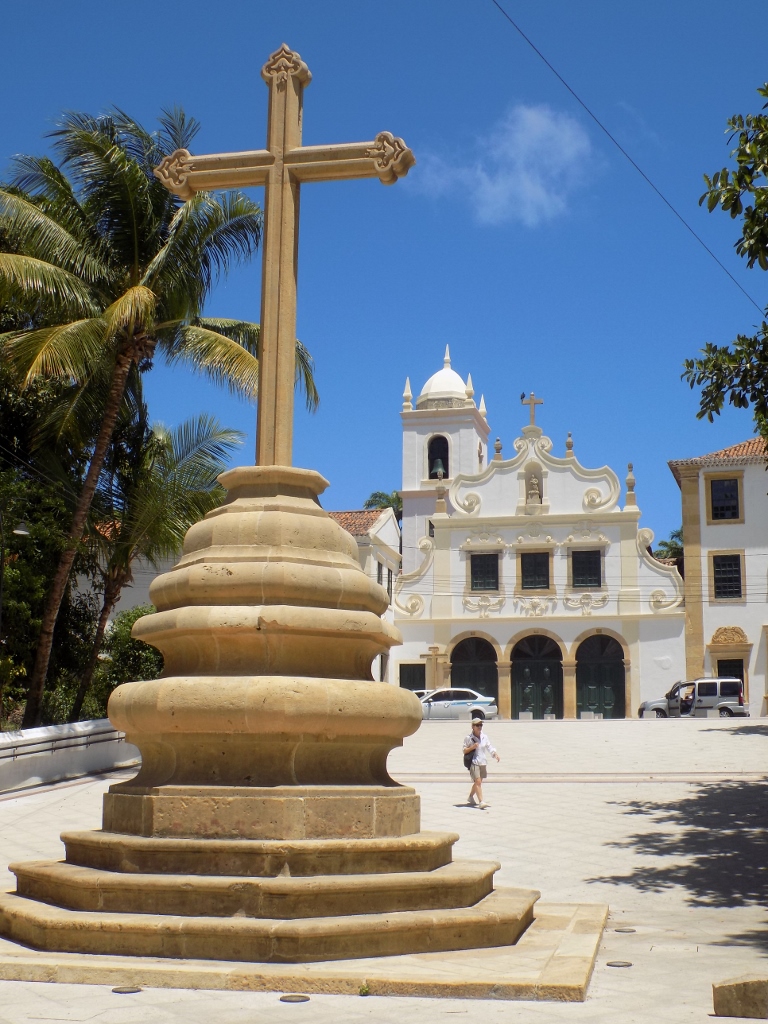 Monumental Cross and the Convent of St Francis (the scavenger bird is still perched on the top of the church)
Monumental Cross and the Convent of St Francis (the scavenger bird is still perched on the top of the church)
Then we leisurely continued to go up the hill and thus we reached the Cathedral at some point. The Cathedral was originally built in 1537, but like the Convent of St Francis it was burned to the ground by the Dutch in 1631. Since then, it has been reconstructed and renovated four times.
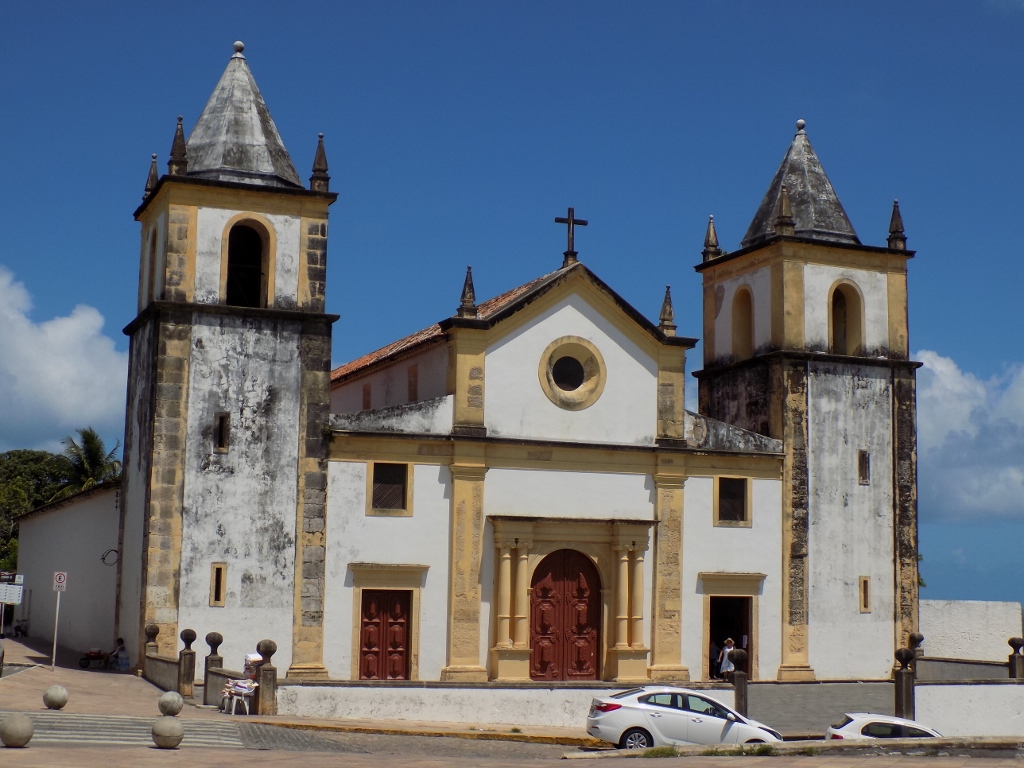 Olinda Cathedral
Olinda Cathedral
I found it particularly interesting when I got out to the terrace belonging to the Cathedral which can be reached through an exit in a side wall. From there, there is a fantastic view not only of the town itself, but also of Recife that is not too far away.
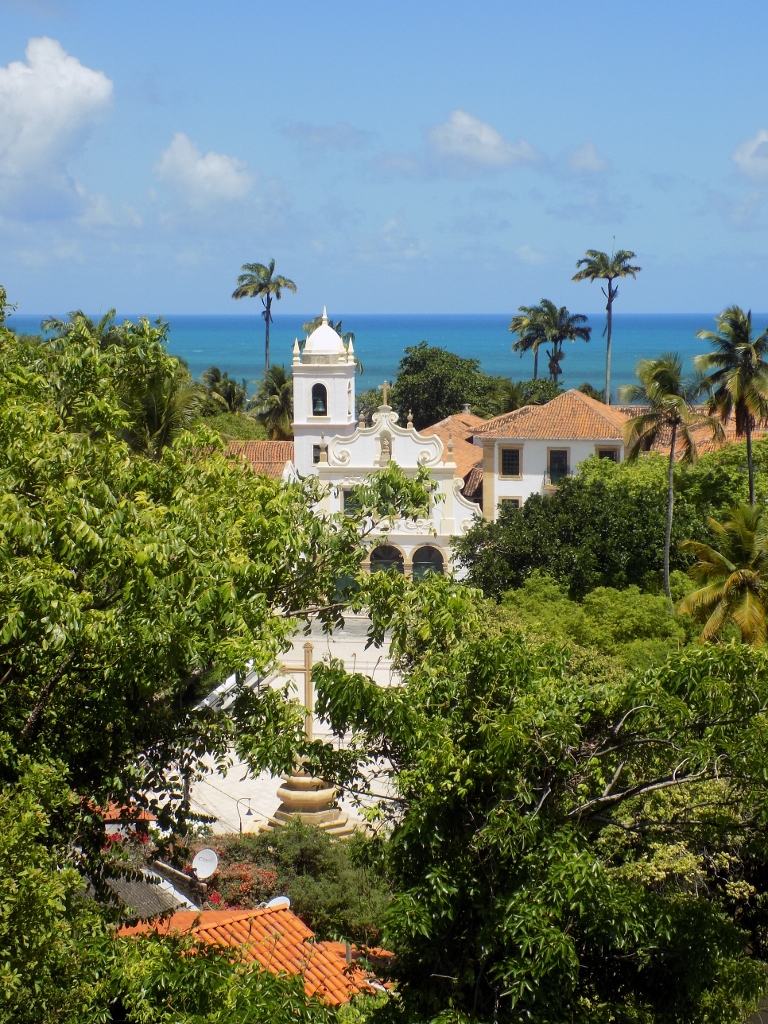 View at the Convent of St Francis
View at the Convent of St Francis
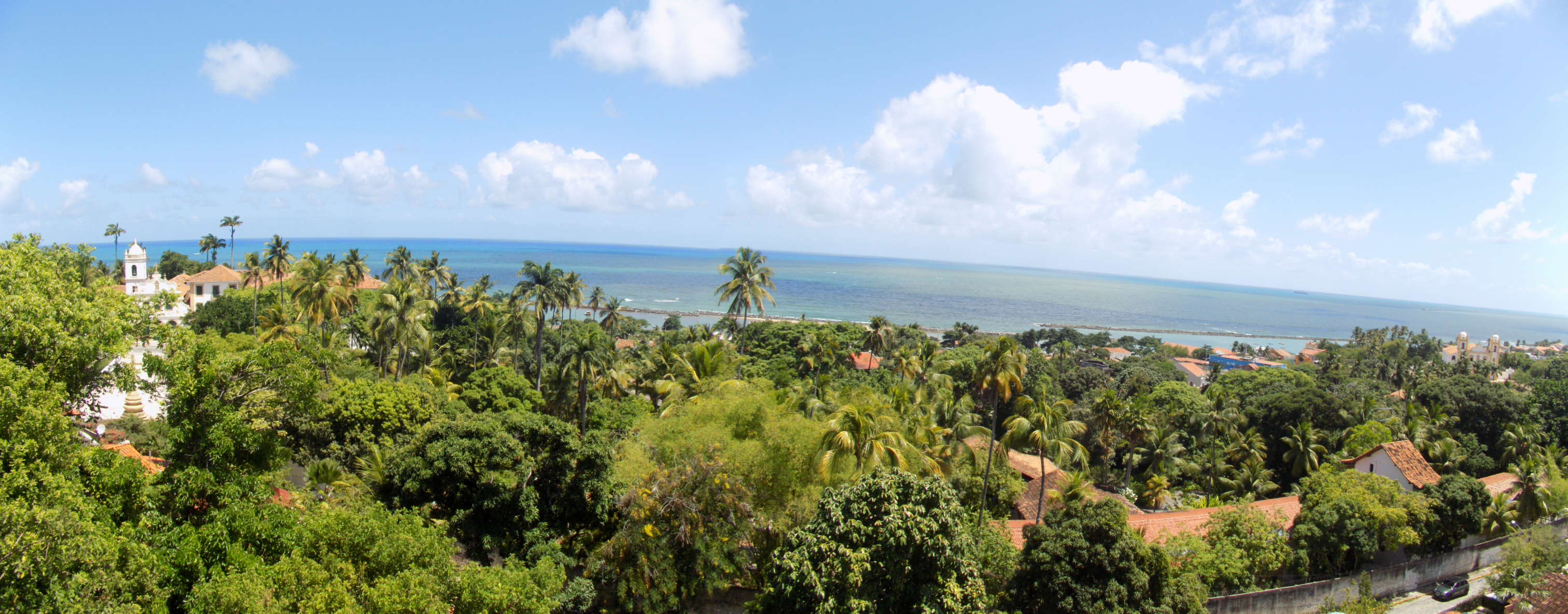

View at the parts of Olinda hidden in the greenery, Recife is in the distance
In the square in front of the Cathedral and in the street that runs along one of its sides, there were numerous stands with souvenirs. Also, there were improvised kitchens and then we decided to sit at a table that belonged to one of them and have pancakes made of tapioca flour, or rather made of starch called tapioca which is obtained from the cassava plant (also called manioc).
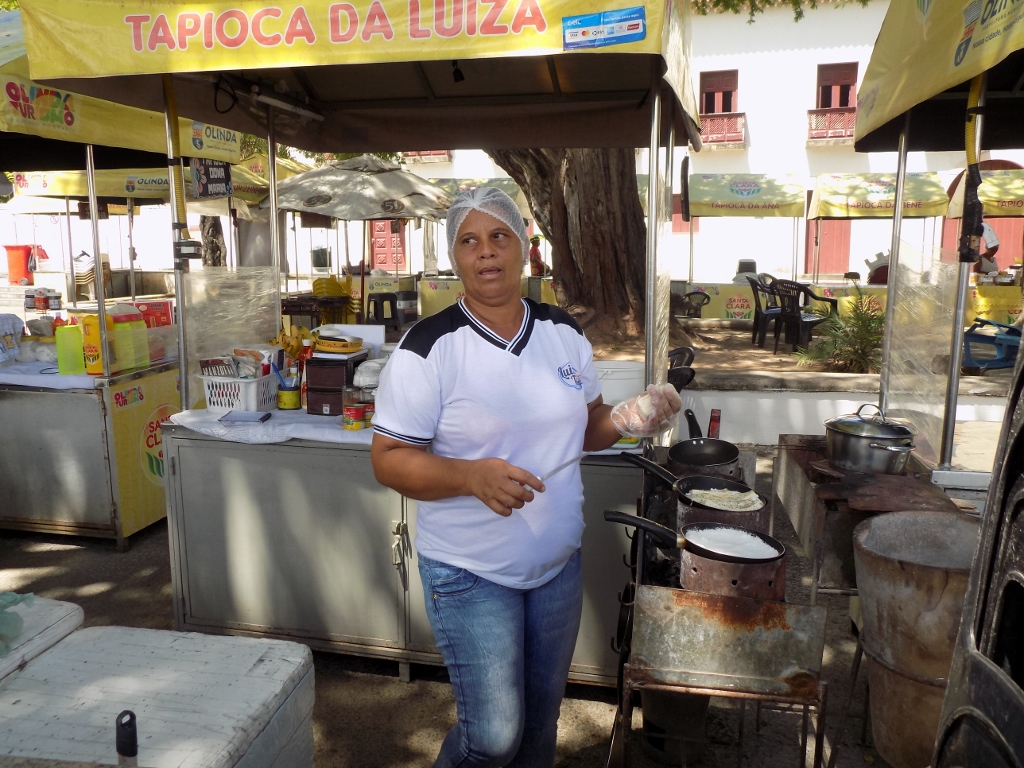 Luiza is talking with a neighbour while preparing tapioca pancakes
Luiza is talking with a neighbour while preparing tapioca pancakes
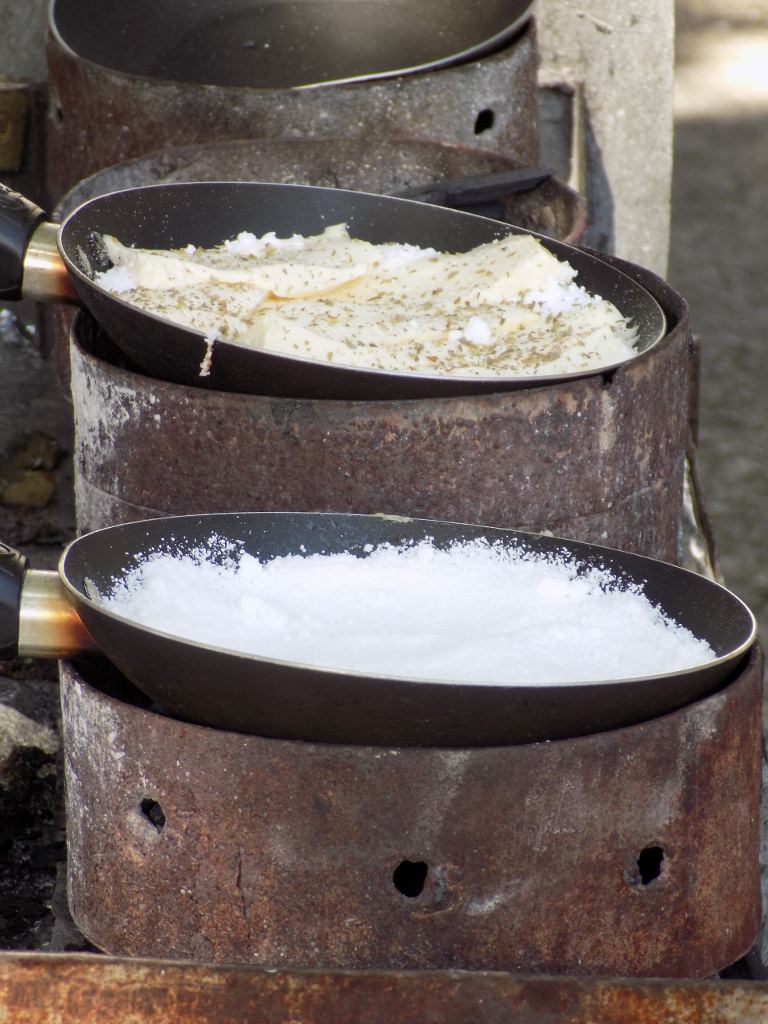 Pans with tapioca flour
Pans with tapioca flour
The preparation differs from the classic pancakes/crepes in terms that there is no batter, but rather the flour is put into a pan, some butter is added and then you put on top the flavours of your choice. I was very greedy this time and I immediately ordered two types. The savoury one was with cheese and oregano (a lot of cheese that melts wonderfully), while the apparently sweet version also had cheese, albeit somewhat less, as well as a large quantity of caramel that is very popular in South America and that I like quite a lot. In Brazil it is called doce de leite, but in the rest of the world it is better known under its Spanish name which is dulce de leche. Do you need to mention that I was incredibly full afterwards?
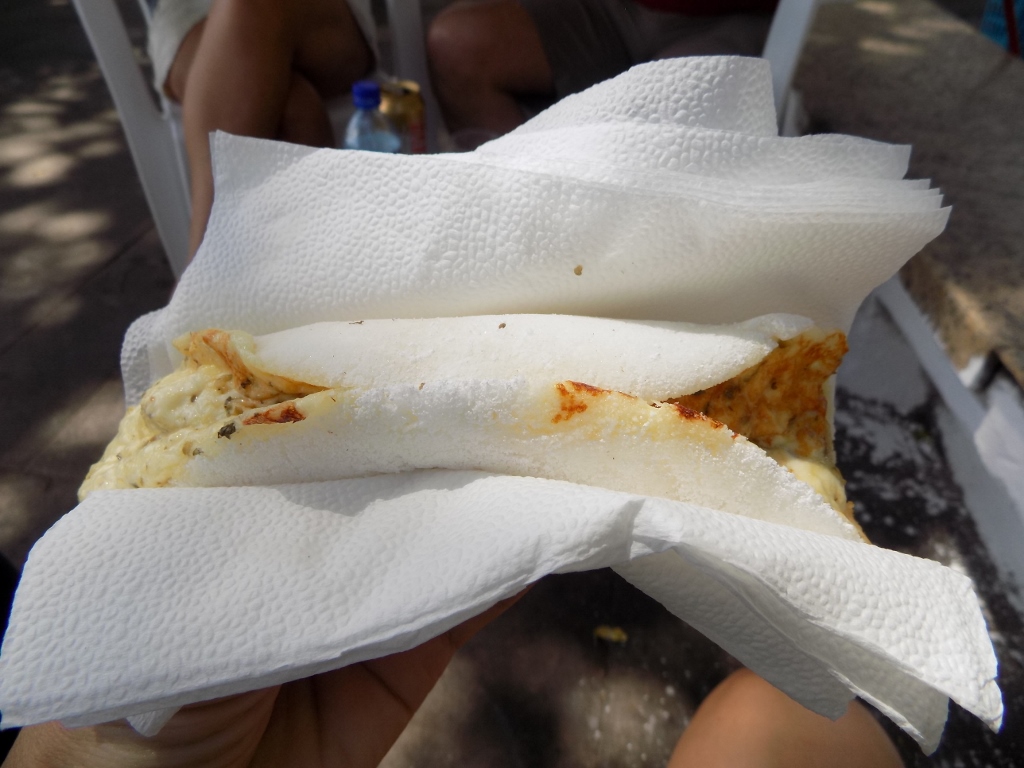 Savoury tapioca pancake – with cheese and oregano
Savoury tapioca pancake – with cheese and oregano
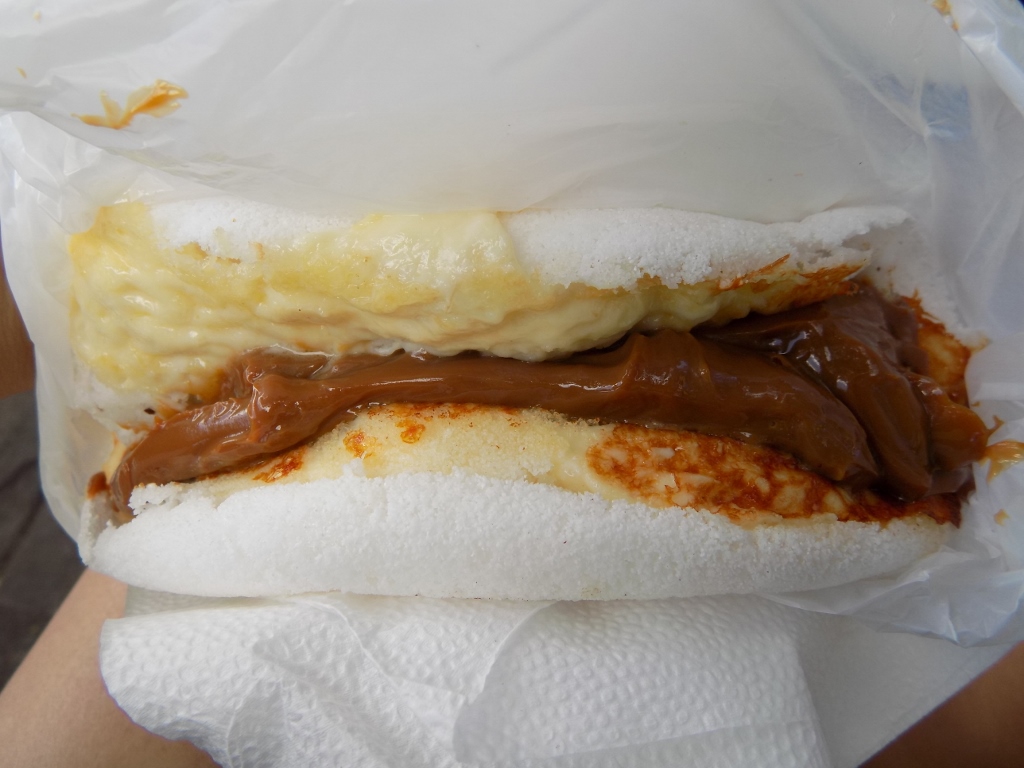 Sweet tapioca pancake – with cheese and caramel
Sweet tapioca pancake – with cheese and caramel
With our stomachs full, we moved on. Not too far from the Cathedral there is the Church of Our Lady of Conception (Igreja de Nossa Senhora da Conceição), but it was closed and we only entered its courtyard for a short while.
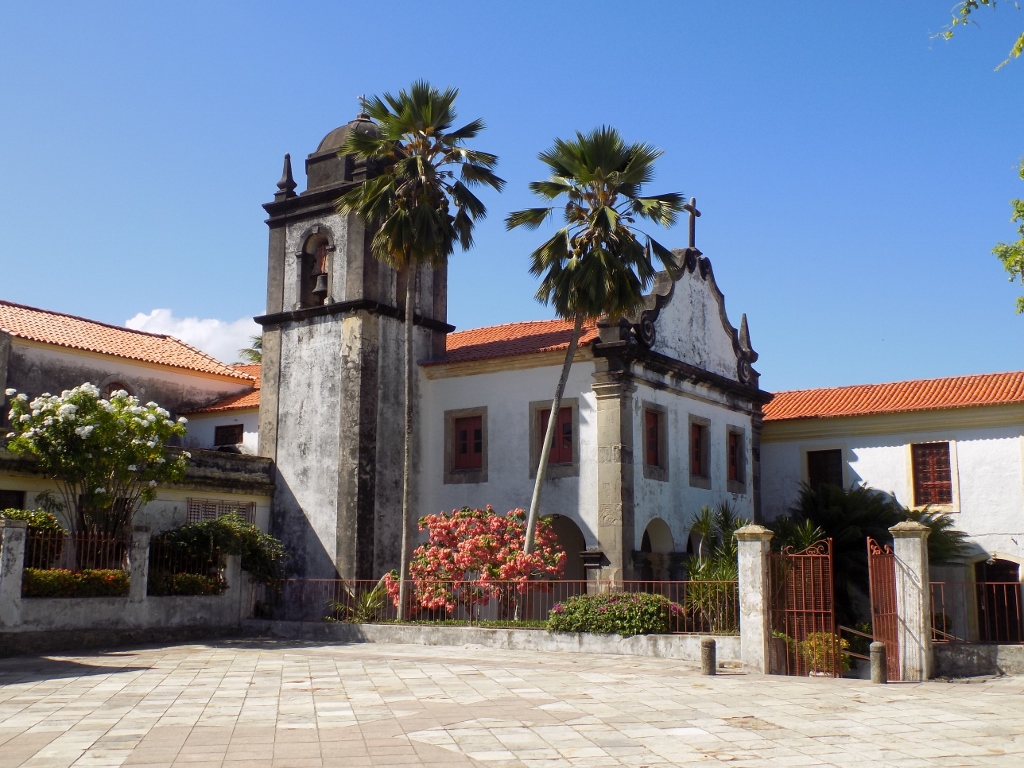 Church of Our Lady of Conception
Church of Our Lady of Conception
Then we started to go downhill walking in the direction of yet another church and monastery, but it was truly fantastic that we walked past amazingly colourful houses.
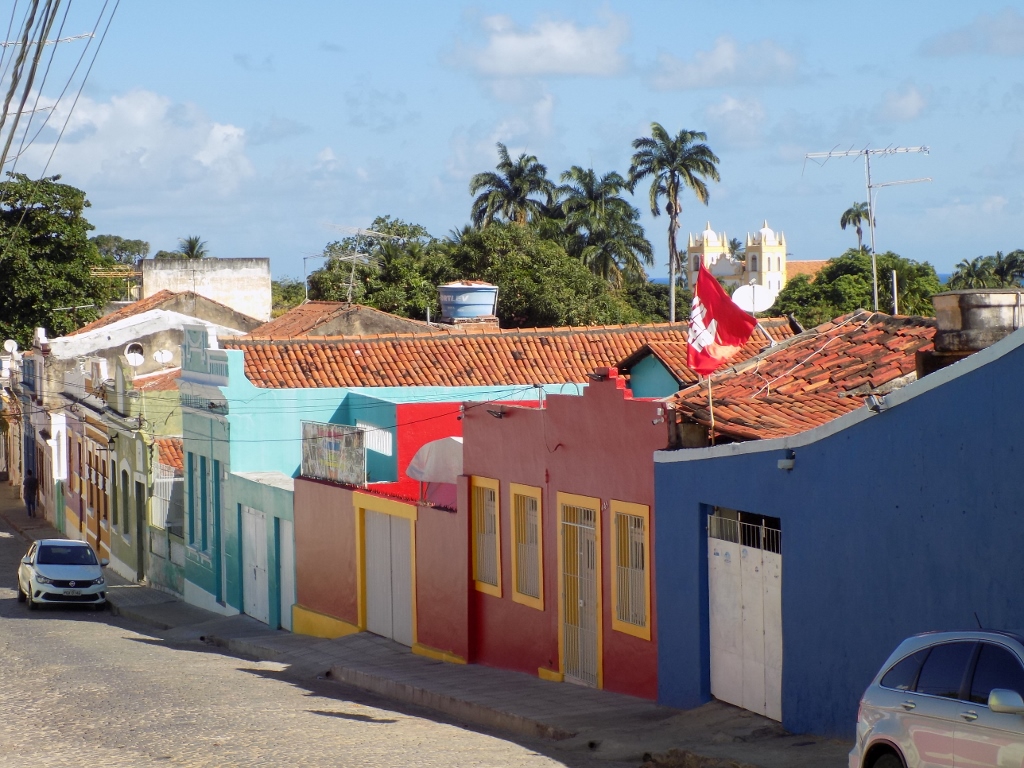 Houses in Olinda, with the Church of Mount Carmel (Igreja do Carmo) in the background
Houses in Olinda, with the Church of Mount Carmel (Igreja do Carmo) in the background
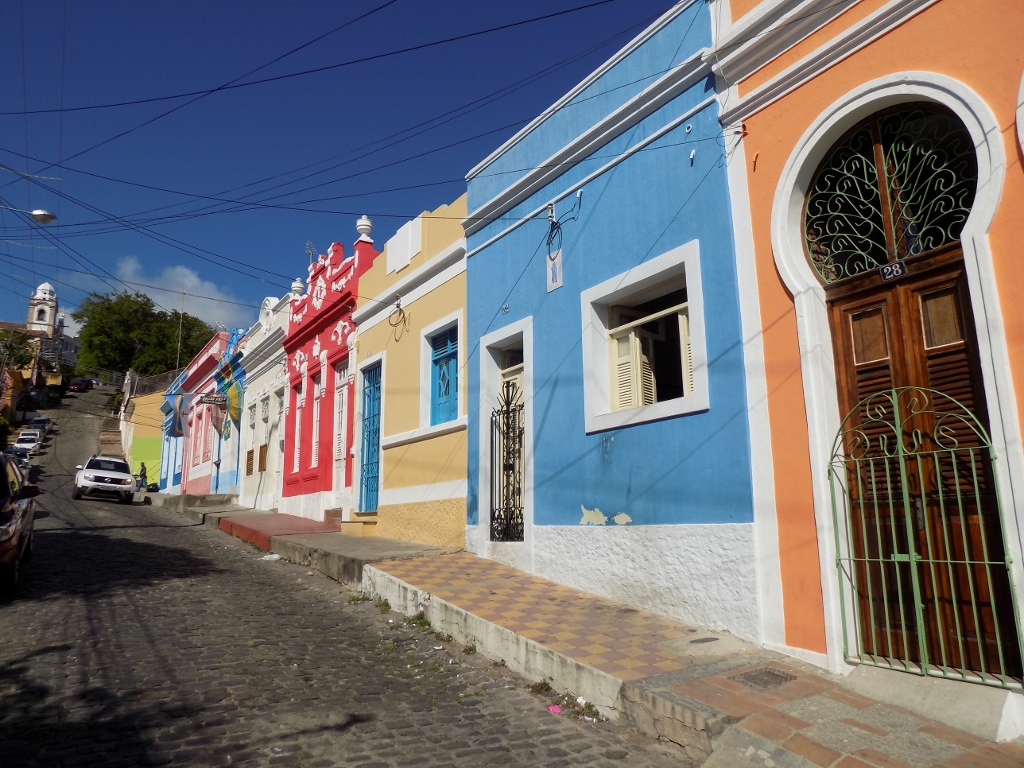 Houses in Olinda, with the Misericordia Church (Igreja da Misericórdia) on the top of the hill
Houses in Olinda, with the Misericordia Church (Igreja da Misericórdia) on the top of the hill
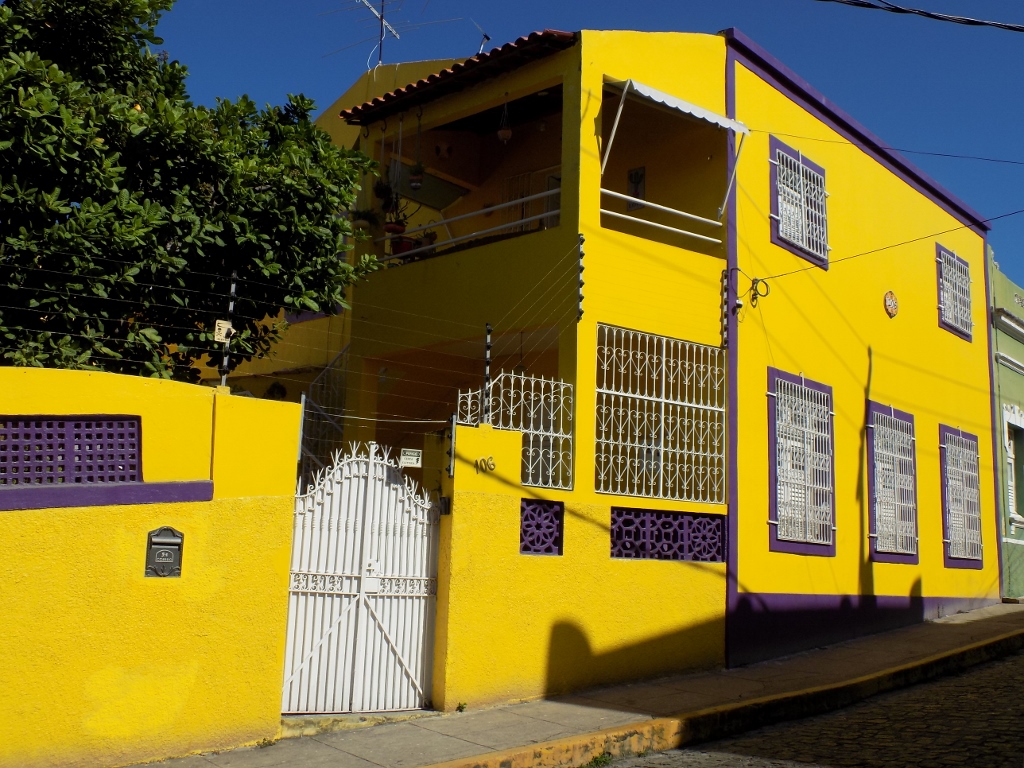 There are all sorts of houses in Olinda
There are all sorts of houses in Olinda
And then we finally reached the Monastery and Church of St Benedict (Mosteiro e Igreja de São Bento). Here, the Dutch also burned the original built in 1582.
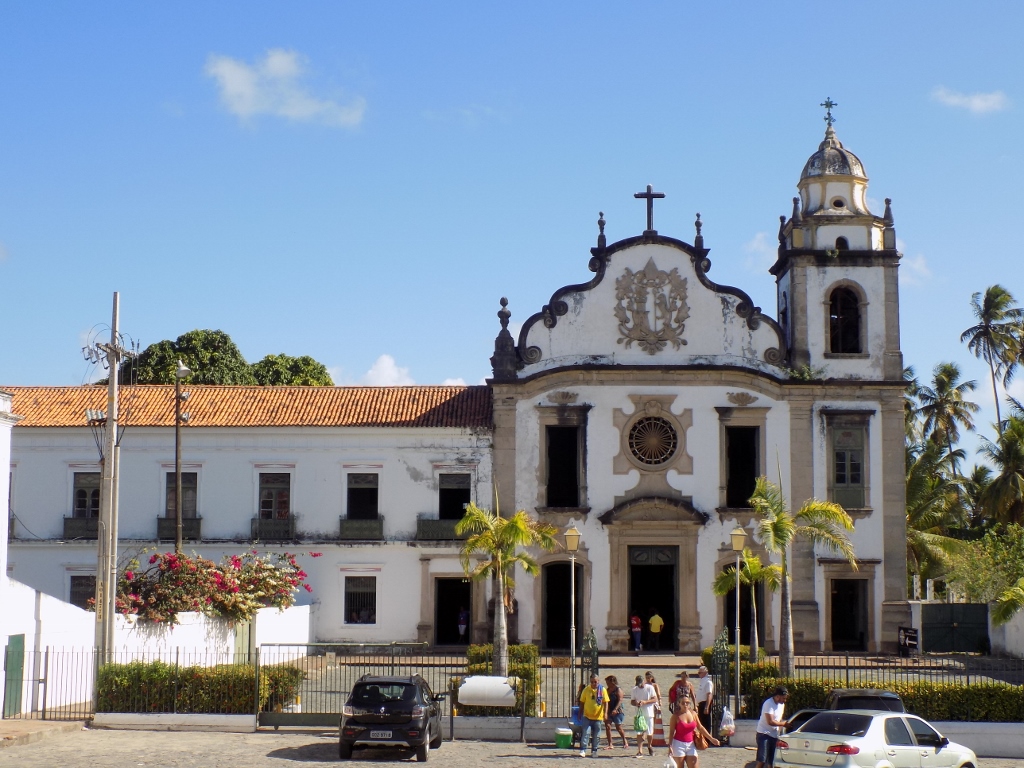 Monastery and Church of St Benedict
Monastery and Church of St Benedict
By this point we were quite exhausted because of the heat, so we went down a street and going through a park we passed by the last church that was in our plans for the day. This was the Church of Mount Carmel (Igreja do Carmo) that rises on a small elevation.
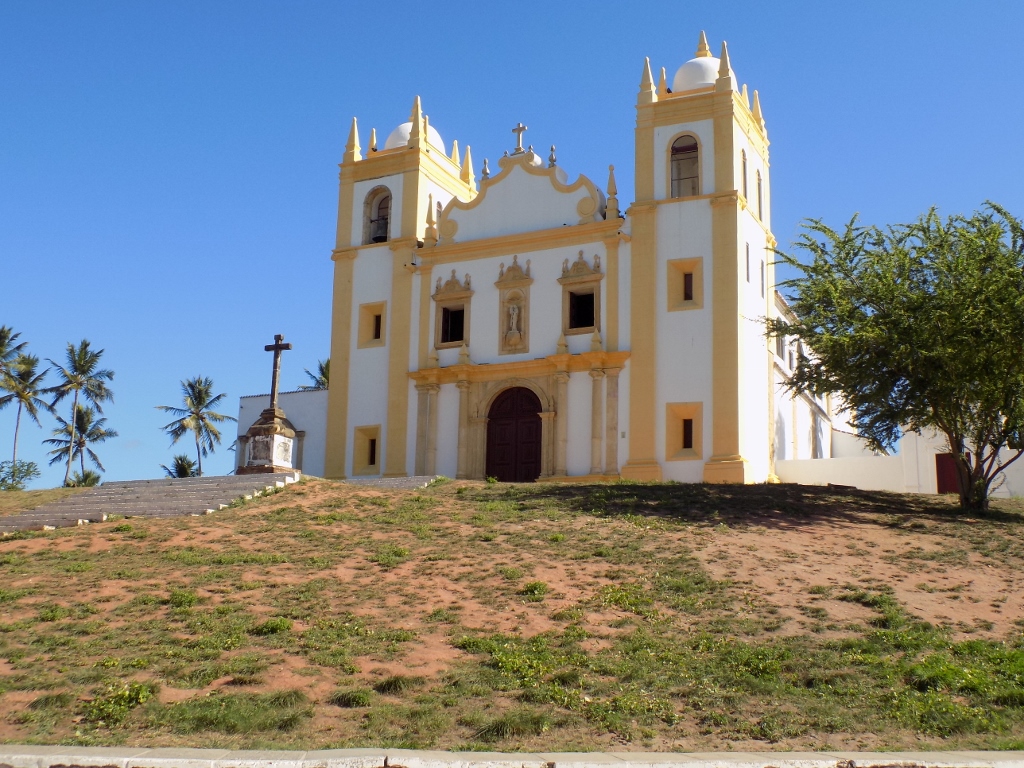 Church of Mount Carmel with its Monumental Cross
Church of Mount Carmel with its Monumental Cross
We could see already from the foot of the elevation that it was closed and here Sneža refused to walk up for nothing, but I did climb the stairs and eventually I was very happy that I had done it, since I saw a great kiskadee (Pitangus sulphuratus) in one of the nearby trees.
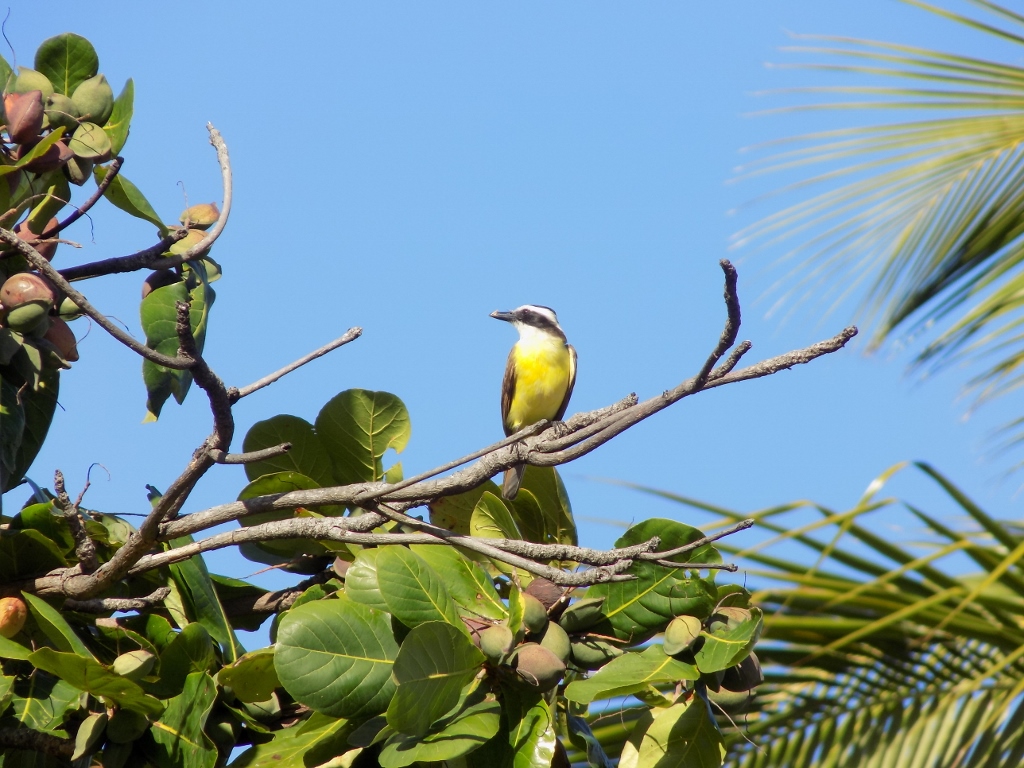 Great kiskadee (Pitangus sulphuratus)
Great kiskadee (Pitangus sulphuratus)
This is where our sightseeing of Olinda practically ended. While we were waiting for the bus, I noticed a cinema building across the street. It had very nice architecture and it had certainly seen better days.
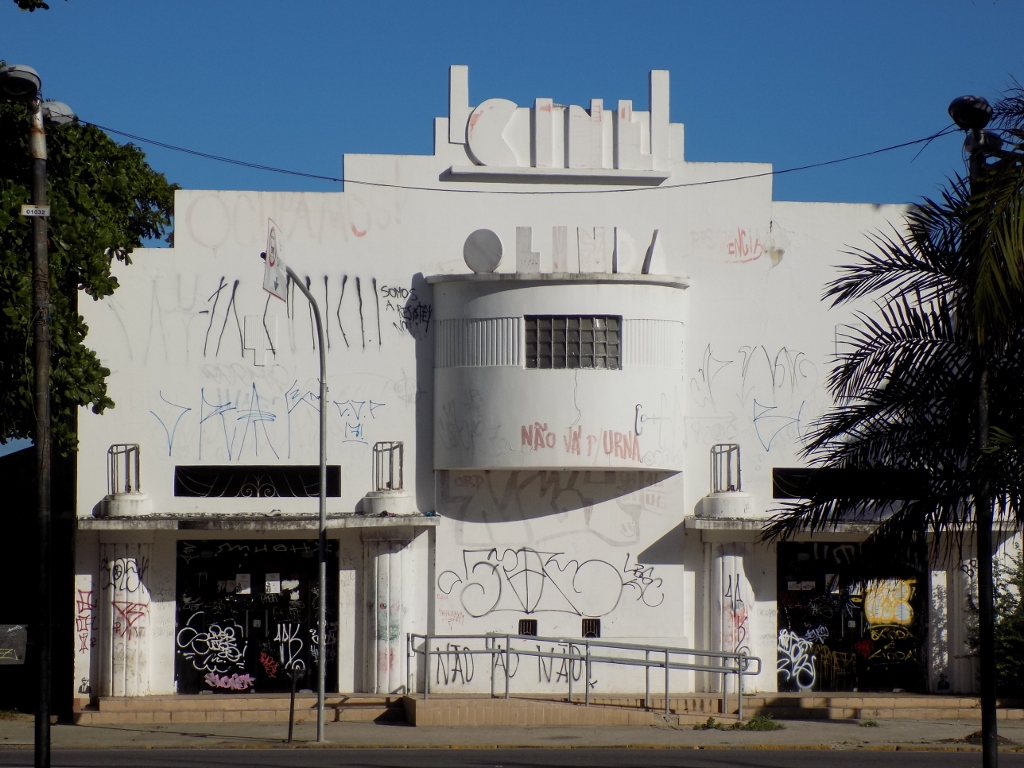 A cinema in Olinda
A cinema in Olinda
On our way back from Olinda, we were not quite sure at which bus stop we should get off, but in the end it all went well and we got out of the bus close to our hotel. Still, we first went to the beach. The beach in Recife is not the place where I would like to swim, but I don’t think I was the only one. The waves were relatively big and in addition to that the water was not attractive – it was murky with pieces of seagrass and even seemed dirty. However, I did walk along the beach a little, while Sneža waited for me beside the beach, but we did not stay there for too long, since the night was getting close and we wanted to get ready for the continuation of our journey the next morning.
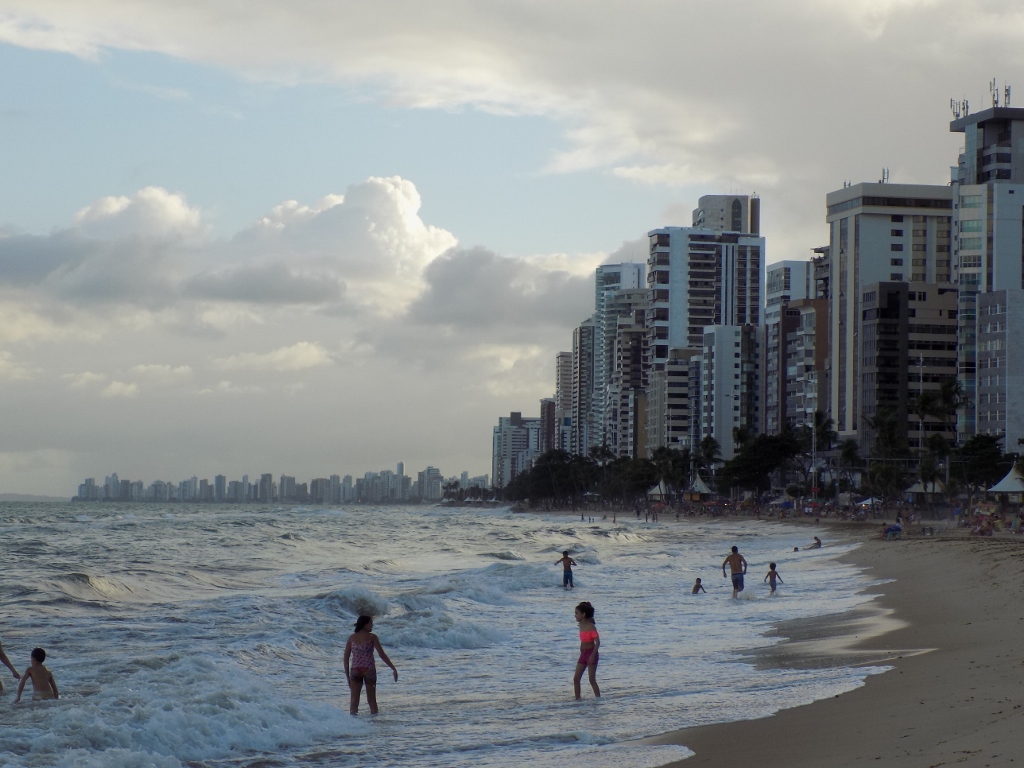 Beach in Recife
Beach in Recife
The following day we flew by plane to the island of Fernando de Noronha. The island, i.e., the archipelago it belongs to, is very interesting, especially in terms of biodiversity and importance in terms of untouched nature. So much so that it is inscribed in the UNESCO’s World Heritage List (here, of course, this concerns the natural heritage). Here is the map to remind you where this island is.
Most of the island is a National Park and because of such importance of the island and the preservation of the natural balance, there is a limit to the number of people that may come and visit it. When we met some Italians at the beginning of our journey around Brazil, we mentioned that we would go to Fernando de Noronha at the end of our stay and they were completely shocked since they said it was very difficult to get there on account of the limited number of visitors. They were not quite right. I simply bought the plane tickets for the two of us a couple of months before the trip and that was enough.
As far as the local population is concerned, less than 3,000 inhabitants live permanently on Fernando de Noronha.